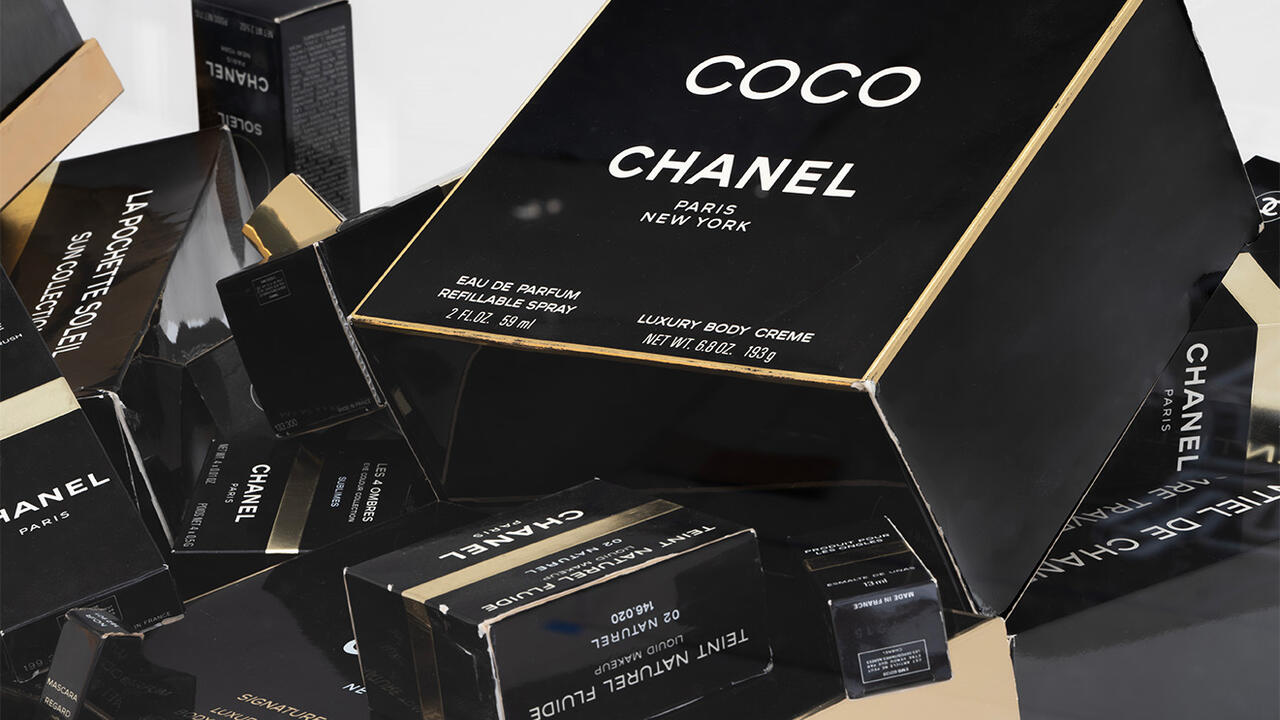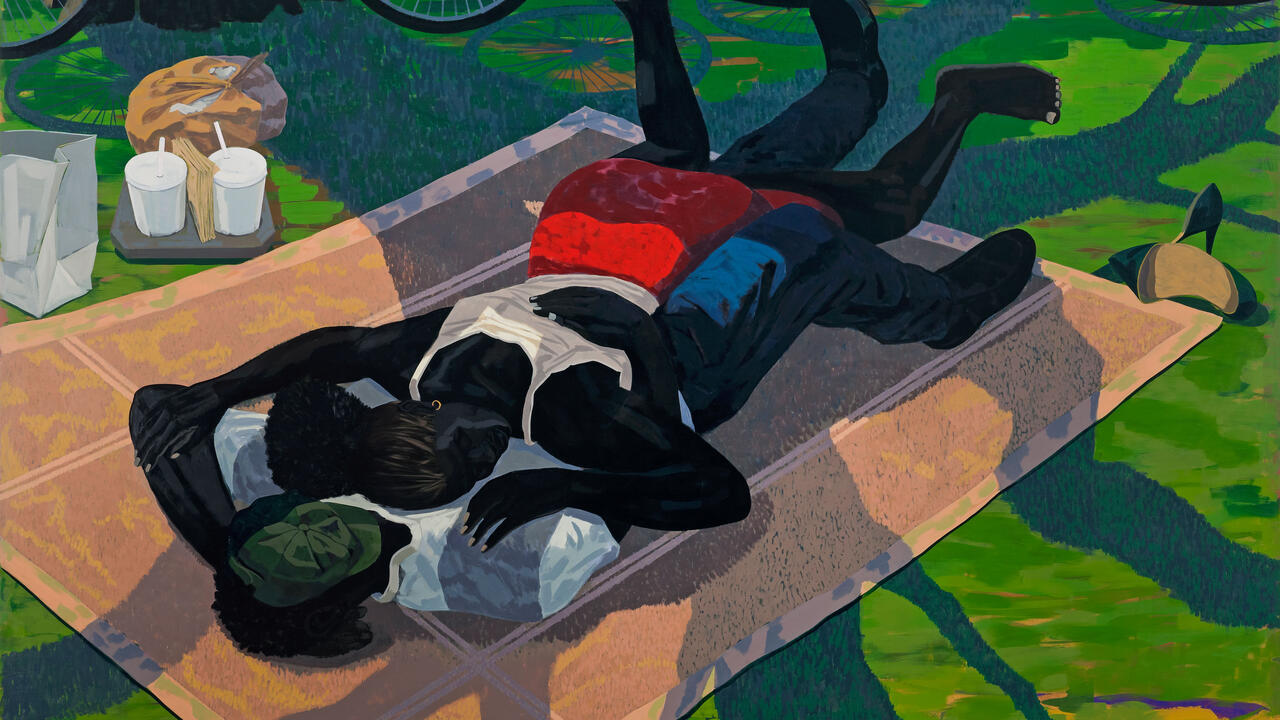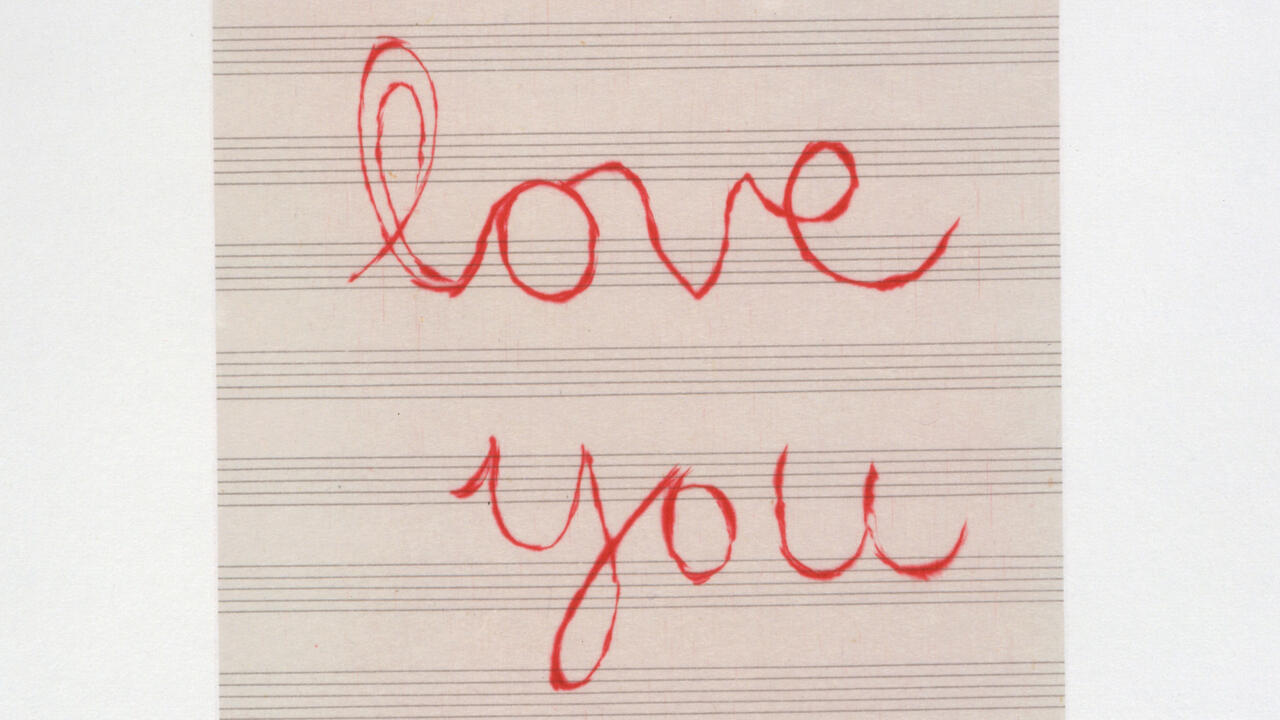One Take: Luke Willis Thompson ‘_Human’
A new film uses a sculpture by the late Donald Rodney to reflect on the many tales of race and class that are etched on the skin
A new film uses a sculpture by the late Donald Rodney to reflect on the many tales of race and class that are etched on the skin

The final line of Frantz Fanon’s impassioned anti-colonial book, Peau noire, masques blancs (Black Skin, White Masks, 1952), is rendered, in English, as follows: ‘O my body, make of me always a man who questions!’ 1 Published in the same year that the term Third World was coined by anthropologist Alfred Sauvy, Fanon’s closing prayer forged a new link between anatomy and the destiny of those that Europe colonized, whose bodies were trafficked into bondage. Routing a sense of corporeal novelty through his own vexed identification with manhood, Fanon’s prayer undermines any attempt to privilege normative masculinity. In asking his body to make of him ‘a man who questions’, Fanon sets himself in opposition to the colonial father who expects a body to mutely follow. As we continue to reckon with the malignant colour-coded hierarchies that we have inherited from slavery and colonialism, so Fanon’s declaration echoes. His term for this legacy’s lingering presence upon the body, ‘a racial epidermal schema’ 2, remains a crucial theoretical phrase for working through our own era, one in which, as cultural theorist Paul Gilroy notes: ‘screens rather than lenses now mediate the pursuit of bodily truths.’ 3
In reckoning with the manner by which postmodern screens picked up where colonial-era lenses left off, Gilroy brings Fanon’s doctorly focus on the body into our present media ecology – an environment in which proliferating digitized pathologies do the work of reifying race. How does one compose a black corporeal schema in a world of omnipresent video surveillance and ubiquitous snapshot photography? Every day, the impulse grows stronger to beat a retreat from the modern frenzy, for the sake of a body whose finitude cannot bear up to the speed or intensity of all that is demanded of it.

For racialized and colonized people, those targeted for arbitrary and structural violence, the search for such respite could be mistaken for a retreat into humanism of an old-fashioned sort. No such humanism guides the careful and painstaking thinking behind Luke Willis Thompson’s new single-screen film, _Human (2018). In recent years, Thompson has developed a reputation for formally minimal, hauntingly precise and incandescently rageful artistic gestures that offer a deep gaze into the eyes of us who, in the artist’s words, are ‘readymade for violence’. 4 He has taken as his subject matter the racism faced by Pasifika communities in New Zealand, the police murder of black people in the US and UK, ‘stop and frisk’ street harassment in New York and the multiple displacements of racialized subjects in the Pacific Islands and beyond. Like Andy Warhol, Thompson has no alibi as to why it is his camera that should be the one capturing violence and its aftermath. But, unlike Warhol, Thompson works in close consultation with his subjects or their estates, to secure their informed consent. In this era, such scruples around consent and participation might seem quaint – are not each and every one of us continuously being captured by human-operated and automated cameras? But such a slowing down and rarefaction of the image-producing machine is critical to an artistic process that results in images of such luminosity.
With a run-time of nine minutes and 30 seconds and a complete absence of sound, _Human depicts another work of impossible fragility: Donald Rodney’s sculpture My Mother, My Father, My Sister, My Brother (1997). But we don’t know this at first. Close-up images of an illuminated surface stitched together with pins fade, slowly, in and out of view, only to stutter into life. A camera rotates – slowly, again – as it peers up at what seems to be a cathedral ceiling held together with tape. Only after we become immersed in the sedate texture of this object does the camera pull back to reveal what we are seeing: a tiny house floating in black space.

It feels intimate, painfully so, and it should. Rodney’s sculpture was made from his own skin, skin that he shed during multiple hospitalizations for sickle-cell anaemia, the condition that would claim his life, in 1998, shortly before his 37th birthday. Born in the UK to black Caribbean parents, Rodney was a prominent member of the BLK Art Group, which formed in Wolverhampton in 1979. Along with artists such as Eddie Chambers, Keith Piper and Marlene Smith, Rodney participated in a vibrant, collaborative effort to bring the black art movement to the British midlands and beyond. His notebooks, held in the Tate Archive in London, document an intense creativity that persisted in spite of his illness. With the form of the house a recurring motif and topos of investigation, his ‘double-voiced’ work has received ongoing attention, as art historian Kobena Mercer puts it, ‘both as a son’s loving testimony to the migrant journey by which his father uprooted himself from one place to make a home in another and as one individual’s fearless confrontation with his own mortality’. 5
The title of Rodney’s work alludes to hereditary biological inheritance: a shared set of genetic traits that makes a person’s skin not entirely their own. It thus evokes the moment when, as Édouard Glissant notes, ‘one consents not to be a single being and attempts to be many beings at the same time.’ 6 I see such an attempt in Thompson’s cinematic weaving of his own family’s genetic code into the cuts and edits of _Human. Thompson, like Rodney, has a hereditary illness, Huntington’s disease, and has transposed his own genetic map into a sort of score. Sickle-cell anaemia is often thought of as a black or African disease, insofar as the genetic trait that causes the anaemia is predominantly present in those who, like me, are descended from sub-Saharan Africa. By contrast, Huntington’s primarily affects those of European descent. In _Human, these genetic destinies become entangled, as Thompson attempts to be many beings at the same time.

With its haunting aerial and close-up shots of Rodney’s sculpture, some of which formally mimic surveillance footage of police violence, _Human is a subtle work about the morbidity and mortality of the colonial modern. And given the fragility, age and size of the sculpture, Thompson constructed a shooting rig that was capable of what he tellingly describes as ‘surgical precision’. 7 But the work is anything but clinical: this conservationist effort only magnifies the human tremor in the final result, one that is arrestingly, achingly alive. Stolen life is of deep interest to Thompson, a New Zealand artist of Fijian and European descent, whose work has long investigated the corporeal consequences of colonial and neo-colonial racism. He is eclectic in his influences, voracious in his research habits and deeply imprinted by the impact of planetary blackness as a counter-culture to modernity. _Human is the first of his recent films to diverge from the appropriation aesthetics of his previous work, which drew upon the technical constraints that Warhol employed in his ‘Screen Tests’ (1964–66). Abandoning neutrality, Thompson’s camera now takes a more active and mobile stance.
My father was a pathologist. Growing up, I could see race, but I couldn’t see it in his Nairobi lab. Lenses and screens dispersed the fact of blackness along a thousand cellular plateaux; the myth of visible race dissolved into the frantic and spooky complexity of morbid tissue biopsies. I think about his slides when I view _Human, with its titular reference to the ‘tag’ that marks DNA as human in the computer databases that Thompson works with. And I think about how Fanon sought to complete a ‘lysis’ of the morbid body of colonial racism. As a young doctor, Fanon imagined he could extract samples from the social body of colonial rule and dissolve them in his laboratory for analysis. He wanted to understand why colonialism was dying, and what life after its death could be for decolonized people. But his emphasis on the ‘racial epidermal schema’ of those subjected to racism was not an essentialism. He wasn’t interested in finding the cause of our distress in the epidermal cells or seeking to fix blackness in the degree of melanin or traceable African genetic heritage, as many still do. Rather, he sought to counter biological racism by zooming in on the very grounds – science and medicine – that had established it.
Fanon died young, at just 36, of leukaemia, and a glance at his extensive publication history makes clear the classic signs of ‘a young man in a hurry’. Rodney, too, worked furiously up until his very last moment. (Too ill to attend his only solo show, he sent an automated wheelchair to the opening in absentia.) He maintained his fascination with the form of the house, drawing it repeatedly and, in the case of the installation The House That Jack Built (1987), raising it as something that resembles an altar. Rodney’s work has never disappeared, but it can now be rediscovered through an homage that is almost, but not quite, an appropriation of a photo the artist took of his own sculpture: In the House of My Father (1996–97), in which the skin structure nestles in the palm of his hand. Looking at it, I am drawn to a fragment of Saeed Jones’s 2014 poem, ‘Boy Found Inside a Wolf’:
I’m climbing
out of my father. His love a wet shine
all over me. 8
Where Rodney’s photographic setting grants his sculpture an intimate scale, _Human restores to it an intensity that echoes throughout this poem, with its enigmatic fantasy of male birth. Somehow, the film also restores a wet shine to the sculpture, even though the past two decades have rendered the work ‘more brittle than a dried leaf and [weighing] approximately the same’. 9 The poem spells out the allegory of _Human: here, two works that must necessarily reflect a consideration of posterity – of what lives on.
Pursuing a contrast between these two views – from within and beyond Rodney’s own skin – _Human takes the sculpture out of the hospital room and moves it into that which Gilles Deleuze terms an ‘any-space-whatever’. 10 This dislocation re-imagines the sculpture as pure surface and volume. In the same spirit with which Fanon approached the scientific tools of his medical profession, Thompson experiments with the possibility of making his camera take a stance against itself. That it cannot do this, that it must always bring to the image a set of invisible coordinates nestled within the metadata of the image file, is a terrifying hint of the cameras to come, the ones that do not nestle in our palm, but twine their lenses and shutters into our very skin.
To be determined from within and without by destinies out of our control: this diasporic post-colonial experience is given a particular texture in both Rodney’s stitched house and Thompson’s determination to interlace into its pictorial record the story of his own refusal to exist as a single being. But rather than offer us a glimpse of the artist’s hand, Thompson provides us with access to a genetic heredity and a portentous futurity. For me, this mournful and militant act takes me back to my father’s laboratory, to his many, many plates of slides, and to a question that my young mind asked, which my adult mind still can’t answer: what am I looking at in these images? Death? Or Life?
Main image:_Human, 2018, film still depicting Donald Rodney, My Mother, My Father, My Sister, My Brother, 1997. Courtesy: the artist, Hopkinson Mossman, Auckland/Wellington, and Galerie Nagel Draxler, Cologne/Berlin. Commissioned and produced by Kunsthalle Basel
1 ‘Ô mon corps, fais de mois toujours un homme qui interroge!’ Frantz Fanon, Oeuvres, trans. Charles Lam Markham, 2011, Découverte, Paris, p. 251
2 Fanon, Oeuvres, p. 154 and passim
3 Paul Gilroy, Against Race: Imagining Political Culture Beyond the Color Line, 2000, Harvard University Press, Cambridge, p. 37
4 Luke Willis Thompson in conversation with the author, 23 May 2016
5 Kobena Mercer, Travel and See: Black Diaspora Art Practices since the 1980s, 2016, Duke University Press, Durham, p. 30
6 Glissant’s phrase, which is taken from a 2009 conversation between the poet and Manthia Diawara, has recently been adopted and transformed by another poet-theorist, Fred Moten, as the general title of his critical three-volume magnum opus, the first volume of which is published as Black and Blur (Durham: Duke University Press, 2017)
7 Luke Willis Thompson, Turner prize statement, 2018
8 Saeed Jones, Prelude to Bruise, 2014, Coffee House, Minneapolis, p. 13
9 Thompson, Turner prize statement, 2018
10 Gilles Deleuze, Cinema 1: The Movement-Image, trans. Hugh Tomlinson and Robert Galeta, 1986, University of Minnesota Press, Minneapolis, p. 109





















